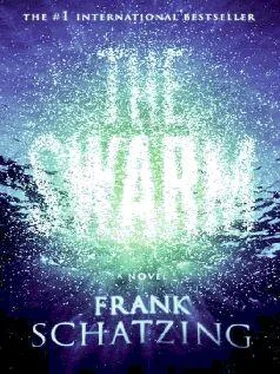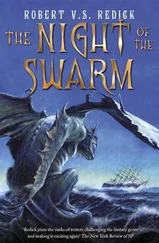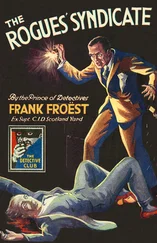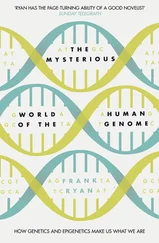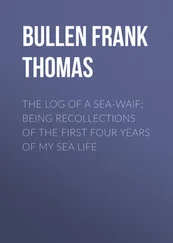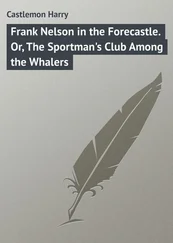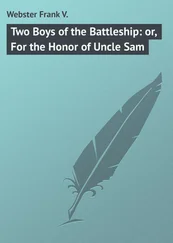She cries out in shock.
The sound dies without an echo, reminding her that she's sealed inside her pod. On her own. With the sinking ship before her, she feels more alone than ever. Her thoughts turn to Anawak, Johanson, Crowe, Shankar and all the others.
Leon!
She is staring in disbelief.
The side of the flight deck appears briefly, then vanishes. The rest is hidden in the darkness, leaving nothing but a furious flurry of escaping air.
Then she feels the pull, and the Deepflight is tugged under.
No!
Feverishly she tries to stabilise the boat. It's her own fault for being so nosy. Why couldn't she have kept her distance? The boat's in trouble, she can see that from the controls. Weaver fights against the pull, using maximum propulsion to get it to rise. The submersible struggles and spins, following the Independence to its grave. Suddenly the Deepflight demonstrates the true brilliance of her design: she escapes from the vessel's wake and soars upwards.
The next second it's as though it never happened.
Weaver can hear her heart pounding. It thunders in her ears. Like a piston, it pumps the blood into her head. She turns off the floodlights, lowers the nose of the Deepflight, and continues her flight to the bottom of the Greenland Sea.
TIME PASSES – maybe minutes or just seconds – and she sobs. She'd known that the Independence would sink – they all had – but so fast?
Yes, they'd known it would be fast.
But she doesn't know if Leon is alive. Or whether Sigur has made it.
She feels terribly alone.
I want to turn back.
I want to turn back.
'I want to turn back!'
Face awash with tears, lips quivering, she questions the sense of her mission. She's nearing the ocean bottom, and there's still no sign of the yrr. She checks the display. The onboard computer reassures her. She's been travelling for thirty minutes, it tells her, and she's 2700 metres deep.
Thirty minutes. How long should she stay down?
Do you want to see everything?
What?
Do you want to see everything, little particle?
Weaver snuffles, an earthly snuffle in the night-time wonderland of thoughts. 'Dad?' she whimpers.
Calm. You've got to stay calm.
A particle doesn't ask how long things take. A particle simply moves or stays still. It follows the rhythm of creation, an obedient servant to the whole. The obsession with duration is peculiar to humans, a doomed attempt to defy our own nature, to separate out the moments of our lives. The yrr aren't interested in time. They carry time in their genome, from the very beginnings of cellular life. It's all there: 200 million years ago, when oceanic plates joined with the land mass that is now North America; sixty-five million years ago, when Greenland began to detach itself from Europe; thirty-six million years ago, when the topographical features of the Atlantic were formed, and when Spain was still far away from Africa; then twenty million years ago, when the submarine ridges separating the Arctic from the Atlantic sank low enough for the waters to circulate, allowing you to make your journey from the Greenland Basin, leading onwards past Africa and further south towards Antarctica.
You're travelling towards the Circumpolar Current, the marshalling yard for ocean currents, towards the never-ending loop of water.
You head out of the cold into the cold.
YOU MAY ONLY be a particle, but you're part of a mass of water that's eighty times bigger than the Amazon. You flow across the seabed, over the equator, crossing the southern Atlantic Basin towards the southernmost tip of South America. Until now you've been flowing evenly and calmly. But once you've passed Cape Horn you run into turbulence. Reeling and tumbling you're pulled into a commotion resembling the lunch-time traffic around the Arc de Triomphe, but infinitely more violent. The Antarctic Circumpolar Current flows from west to east around the White Continent like a vast mixer, transporting and redistributing all the waters of the world. The circular current never stops, never hits land. It chases its tail, carrying enough water for eight hundred Amazons, pulling the planet's water inside it, tearing currents apart and mixing them together, expunging all trace of their identity and origin. Near the Antarctic coast it washes you towards the surface, where you shiver with cold. Foaming breakers sweep you onwards, until you sink back slowly into the vast circumpolar carousel.
It carries you for a while, then ejects you.
You travel northwards again at a depth of 800 metres. All the world's seas are fed by this circular Antarctic current. Some of the water flows into the subsurface South Atlantic current, some into the Indian Ocean, but most of it flows into the Pacific, and so do you. Hugging the western flank of South Africa you course towards the equator, where trade winds part the waters, and tropical heat warms you. You rise to the surface and are pulled to the west, right through the chaos of Indonesia with its islands and islets, currents, eddies, shallows and whirlpools. It seems impossible to pick your way through. Further south you're driven past the Philippines and through the Makassar Strait between Borneo and Sulawesi. Rather than squeeze through the Lombok Strait, you bypass it, flowing eastwards round Timor, a better route that takes you to the open waters of the Indian Ocean.
Now you head towards Africa.
The warm shallows of the Arabian Sea charge you with salt. Passing Mozambique, you travel south. You're in the Agulhas Current now, hurrying in anticipation of returning to the ocean of your origin, throwing yourself into an adventure that has cost so many sailors their lives. You reach the Cape of Good Hope, and it pitches you back. Too many currents collide here. The Antarctic Place de L'Etoile with its Friday-afternoon traffic is all too close. No matter how hard you try, you fail to make headway. Eventually you pinch off from the main current to form an eddy, and at last you're in the South Atlantic. You flow westwards with the Equatorial Current, spinning in vast eddies past Brazil and Venezuela, until you reach Florida and the ring of water tears apart.
You're in the Caribbean, the birthplace of the Gulf Stream. Fuelled by tropical sunshine you begin your passage up towards Newfoundland and on towards Iceland, drifting proudly on the surface and spreading your warmth magnanimously throughout Europe as though you could never run out. You barely notice that you're getting colder. At the same time, the waters of the North Atlantic are evaporating, saddling you with a burden of salt that weighs ever heavier. All of a sudden you find yourself back in the Greenland Basin where your journey began.
You've been travelling for a thousand years.
Ever since the Pacific was divided from the Atlantic by the Isthmus of Panama three million years ago, particles of water have been taking this route. Only another shift in the continents could interfere with the great ocean conveyor belt – or so we used to think. Now the equilibrium of the climate has been disrupted by mankind. And while the opposing factions continue to argue over whether global warming will lead to the icecaps melting and the Gulf Stream stopping, the current has stopped already. The yrr have put a stop to it. They've stopped the journey of the particles, put an end to Europe's warmth, called time on the future of the self-appointed chosen species. Yes, they know very well what will happen when the Gulf Stream stops, unlike their foes, who never see the consequences of their actions, unable to imagine the future because they lack genetic memory, incapable of seeing that in the logic of creation an end is a beginning and a beginning is also an end.
ONE THOUSAND YEARS ,little particle. More than ten generations of humans, and you've circumnavigated the world.
Читать дальше
